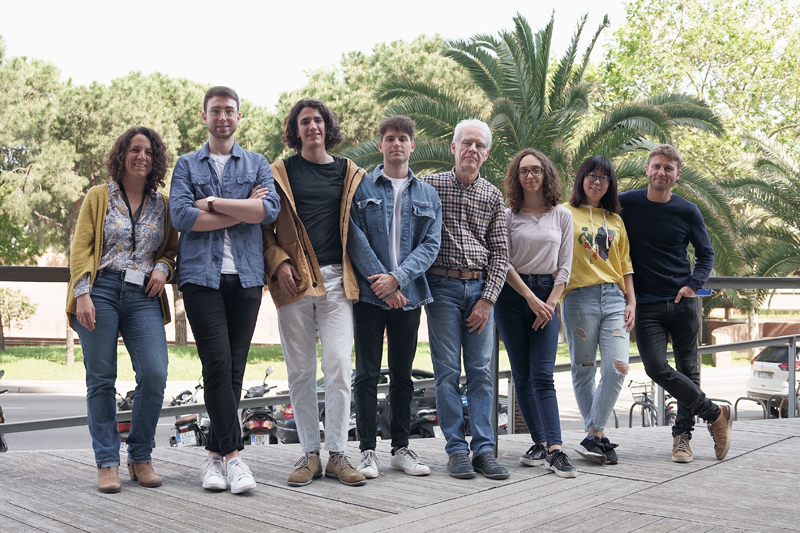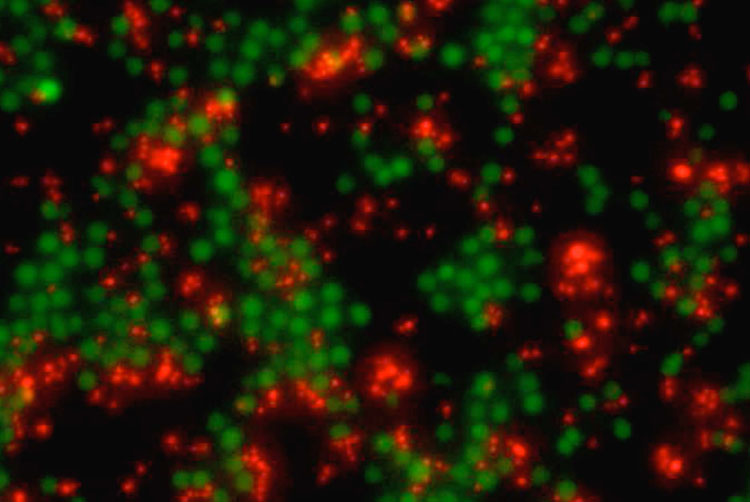 Graf Lab
Graf Lab
 Genome Biology
Genome Biology
- Group page
- Research lines
- Group members
- Publications
June 1969 Ph.D. at the University of Tuebingen
1969-1971 Research assistant at the Max Planck Institute of Virology, Tuebingen.
1972-1973 Postdoctoral Fellow (Fellowship from the “Jane Coffin Childs Memorial Fund Research”) and Instructor, Dept. of Microbiology and Immunology, Duke University, Medical Center, Durham, N.C., U.S.A.
1973-1975 Assistant Professor, Max Planck Institute of Virology, Tuebingen.
1975-1978 Associate Professor, Max Planck Institute of Virology, Tuebingen.
1978-1983 Section Head and Professor, Institute of Virology, German Cancer Research Center, Heidelberg.
1983-1998 Programme Coordinator and Senior Scientist, European Molecular Biology Laboratory, Heidelberg.
1998-2006 Professor of Developmental and Molecular Biology, Albert Einstein College of Medicine, Bronx, NY 10461.
2006-2015 ICREA Research Professor and Group Leader, Centre for Genomic Regulation, Barcelona, Spain
2015-2024 Senior Scientist, Centre for Genomic Regulation, Barcelona, Spain
2025- Emeritus Group Leader, Centre for Genomic Regulation, Barcelona, Spain
News
Researchers reveal how cells rewrite their fate (27/06/2023)
The study, published in the eLife, has implications for cancer research as the disease often arises from errors in cell fate decisions. The study could eventually lead to new methods of accelerating or manipulating the molecular mechanisms involved in the formation of cancer.
Inflammation protein found to have new role in embryonic development (12/08/2022)
In a new study published in the journal Stem Cell Reports, researchers at the CRG have found that IL-6 also plays a role in the development of mammalian embryos.
3-D shape of human genome essential for robust inflammatory response (08/06/2020)
The three-dimensional structure of the human genome is essential for providing a rapid and robust inflammatory response but is surprisingly not vital for reprogramming one cell type into another, according to research published today in Nature Genetics.
The importance of genome architecture for cell identity (15/05/2019)
How cells acquire different identities has long fascinated biologists.
Take my hand and ride with me - over the genome (01/10/2018)
Researchers at the Centre for Genomic Regulation (CRG) in Barcelona, Spain, have identified the mechanism by which an important enzyme involved in the differentiation of stem cells is brought to the DNA.
Genome architecture’s surprising role in cell fate decisions (15/01/2018)
New study led by researchers at the Centre for Genomic Regulation (CRG) in Barcelona, Spain, shows unexpected and crucial role of genome architecture in determining cell fate.
Fluorescent marine worms, software for protein binding propensity, and transdifferentiation of leukemic B-cells (12/05/2017)
Since many inventions remain unexploited due to the absence of an industry sponsor, or the lack of funding, the CRG established a Proof of Concept: Commercialization Gap Fund (CGF) in an effort to bridge the gap from research to commercialization. Now, three projects have been launched within the CGF.
'Blueprint' study of epigenetics of blood cells will serve biology and medicine (07/09/2016)
Researchers from the EU-funded BLUEPRINT project join their international colleagues this week at the 2016 International Human Epigenome Consortium (IHEC) conference in Brussels to report the latest results in understanding blood cell development and blood disease.
EU researchers link reprogramming to stem cell formation and cancer (14/03/2016)
Their findings, which will be published in Nature Cell Biology today, may have implications for both, regenerative medicine and treatment of myeloid leukemia.
Summary
Our laboratory has developed a 100% efficient transdifferentiation system, namely the conversion of B cells into functional macrophages by the overexpression of the transcription factor C/EBPa. Using this system we are studying how C/EBPa activates the macrophage gene expression program and concomitantly silences the B cell program. We are also interested in how C/EBPa collaborates with pluripotency factors in the generation of induced pluripotent cells.
This work will enhance our understanding of normal differentiation and its aberrations in blood cell cancers. A better understanding of cell conversion processes might also help designing new protocols for the improved reprogramming of somatic cells that could become useful for tissue replacement.
Transdifferentiation in action. The video shows a culture of B cells labeled with green fluorescent protein (GFP) surrounded by red fluorescent yeast (Candida albicans). As the transcription factor C/EBPa is activated within the B cells these aggregate and turn into macrophages that ingest the yeast, so that 51 hours after activation all pathogens became eaten. Credits: Jose Luis Sardina, Francesca Rapino and Timo Zimmermann.
ERC Synergy Project - Dynamics of Genome Architecture in Stable and Transient Changes in Gene Expression
Chromosomes and genes are non-randomly positioned in the cell nucleus and the vision of a dynamic and complex organization of the nucleus is replacing the classical view of genomes as linear sequences. (+more info)
Funding acknowledgements
The project "Role of C/EBPa in genome re-shaping during cell fate transitions" (PID2019-109354GB-I00 / AEI / 10.13039/501100011033) has received funding from the National Research Agency (Agencia Estatal de Investigación, AEI), from the Spanish Ministry of Science and Innovation.
- Reprogramming of B lymphocytes into macrophages by enforced transcription factor expression
- How does C/EBPa induce the activation and silencing of genes during the trans- differentiation of pre-B cells into macrophages?
- Transdifferentiation of human lymphoma cells and a potential therapeutic application
- Screening for chromatin modifiers with a role in transdifferentiation
- Role of C/EBPa in inducing the formation of pluripotent cells





